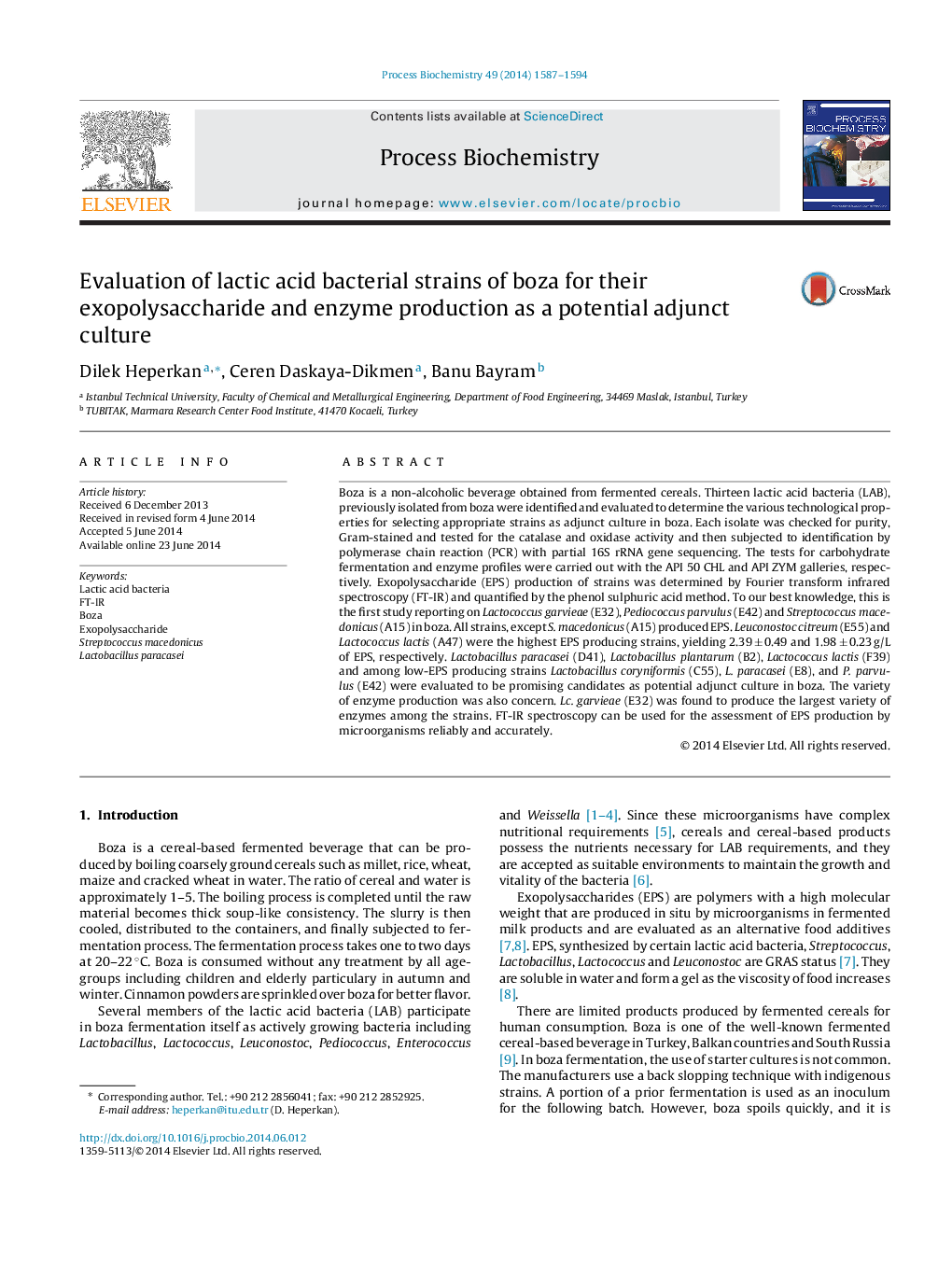| کد مقاله | کد نشریه | سال انتشار | مقاله انگلیسی | نسخه تمام متن |
|---|---|---|---|---|
| 34488 | 45030 | 2014 | 8 صفحه PDF | دانلود رایگان |
• Lactic microbiota in boza was determined.
• EPS production of LAB was determined by FT-IR and phenol sulphuric acid.
• Adjunct cultures for boza were selected.
Boza is a non-alcoholic beverage obtained from fermented cereals. Thirteen lactic acid bacteria (LAB), previously isolated from boza were identified and evaluated to determine the various technological properties for selecting appropriate strains as adjunct culture in boza. Each isolate was checked for purity, Gram-stained and tested for the catalase and oxidase activity and then subjected to identification by polymerase chain reaction (PCR) with partial 16S rRNA gene sequencing. The tests for carbohydrate fermentation and enzyme profiles were carried out with the API 50 CHL and API ZYM galleries, respectively. Exopolysaccharide (EPS) production of strains was determined by Fourier transform infrared spectroscopy (FT-IR) and quantified by the phenol sulphuric acid method. To our best knowledge, this is the first study reporting on Lactococcus garvieae (E32), Pediococcus parvulus (E42) and Streptococcus macedonicus (A15) in boza. All strains, except S. macedonicus (A15) produced EPS. Leuconostoc citreum (E55) and Lactococcus lactis (A47) were the highest EPS producing strains, yielding 2.39 ± 0.49 and 1.98 ± 0.23 g/L of EPS, respectively. Lactobacillus paracasei (D41), Lactobacillus plantarum (B2), Lactococcus lactis (F39) and among low-EPS producing strains Lactobacillus coryniformis (C55), L. paracasei (E8), and P. parvulus (E42) were evaluated to be promising candidates as potential adjunct culture in boza. The variety of enzyme production was also concern. Lc. garvieae (E32) was found to produce the largest variety of enzymes among the strains. FT-IR spectroscopy can be used for the assessment of EPS production by microorganisms reliably and accurately.
Figure optionsDownload as PowerPoint slide
Journal: Process Biochemistry - Volume 49, Issue 10, October 2014, Pages 1587–1594
